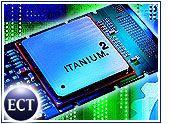
As wireless providers search for the right mix of services to spawn a boom in mobilecommerce, experts say they also must develop a data pricing strategy that clicks withcustomers.
According to Yankee Group researchdirector Adam Zawel, the practice of charging based on bytes or kilobytes of datatransmitted to a mobile device baffles many users.
“The vast majority of wireless consumers don’t know what a bit or byte is, so they areprobably not going to be excited about paying for them,” Zawel told the E-Commerce Times.
Too Many Plans
In addition to the knowledge factor, consumers often cannot determine the true cost ofdata services when pricing plans are phrased in terms of kilobytes or megabytes,Giga Information Group researchdirector Brownlee Thomas told the E-Commerce Times.
“The carriers right now make it very difficult for average consumers to know up frontwhat they will be paying when the bill arrives,” Thomas said.
Consumers are also confused by pricing plans that vary wildly from carrier to carrier andbetween various network technologies, she added.
Mounting Bills
While prices vary based on regions and special promotions, a recent check showed thatCingular Wireless, for example, chargesUS$7 per month for 1 MB of data and 10 cents per text message, with a $9 plan thatincludes 100 messages. For data receipt over 1 MB, the cost is an additional 3 cents perkilobyte — which Thomas noted amounts to $30 per megabyte.
In actual usage terms, Thomas said, monthly bills could mount quickly for an average user– 10 MB is enough for about 180 Web pages or 1,700 e-mails. Also, the costs cited apply onlyto data. Voice calls are charged separately, and there are additional fees for roaming.
Thomas said today’s pricing plans are affordable for many enterprises, but consumers willlikely remain resistant until prices are reduced and streamlined. She noted that areasonable monthly rate at which consumers probably would use data services is in therange of $40 to $50 — about what users pay, for example, for e-mail service on aBlackBerry device.
Strategy Search
For the foreseeable future, Zawel said, wireless companies will offer a variety ofpricing models for data services. Carriers probably will want to link pricing to networkusage as long as network capacity is constrained, but flat-rate plans will be attractivefor their simplicity.
Per-kilobyte pricing will likely find more traction in the enterprise than in theconsumer services arena, he noted.
“Over the next few years, we will see at least three pricing models: per minute,per byte and per transaction,” Zawel said.
Before mobile commerce can take off in the United States to the extent that it hasprogressed in Asia and Europe, wireless providers must clear a number of hurdles,according to experts.
One such hurdle is that carriers must clearly distinguish free content — servicesbundled with a flat-rate fee — from premium content that they hope to provide on aper-transaction basis, Zawel said.
‘Cold Shoulder’
In a recent research brief, Forresteranalyst Charles Golvin noted that the marketing and pricing problems facing U.S.wireless providers are embodied in AT&T’s mid-April launch of its mMode wireless dataservice.
Golvin predicted that mMode in its current form “will meet with a cold shoulder” becauseof several problems, including undifferentiated services — limited primarily tomessaging, search, calendar and games — and “nebulous pricing.”
“MMode forces customers to learn the meaning of a kilobyte because it charges customersbased on the number of bytes downloaded — including any advertising content,” Golvinsaid, noting that AT&T charges an additional 25 percent premium on data roaming.
“The pay-per-byte model runs counter to U.S. consumers’ Internet experience of unlimitedusage at a flat rate,” Golvin added. “Early mMode adopters will use the service sparinglyuntil they understand the relationship between usage and cost.”
Experts pointed to a number of other reasons whyconsumers have not flocked tom-commerce, includingprivacy and security concerns, a lackof compelling applications, and device navigation designs that are not well suited forbuying products and services.
Tide Still Expected
While pricing formulas are in flux and current adoption of m-commerce is sluggish,experts noted that an eventually huge market for data services is not in doubt. TheYankee Group has predicted there will be close to 100 millionmobile data users in theUnited States alone by 2006.
The research firm also has projected that by the same year, 50 million wireless phoneusers in the United States will use their mobile devices to authorize payments forpremium content and physical goods.
In an April research report, Zawel said that mobile payments will become “a realopportunity” once next-generationnetworks are launched and devices with multimedia wireless access are available toconsumers.
Giga’s Thomas noted that once pricing issues are ironed out, carriers will still have toconvince users to trade in their older devices for newer ones enabled for optimum use ofm-commerce services.
“If you don’t have something that gives me an irresistible experience, I’m not going touse it,” she said.











































Social Media
See all Social Media